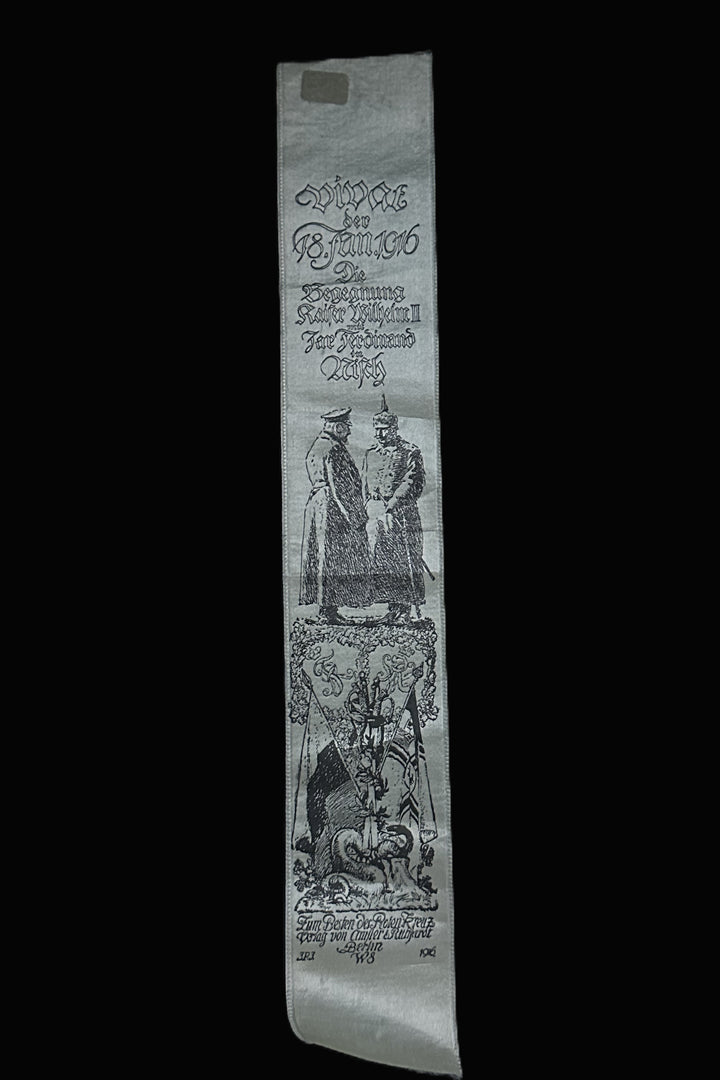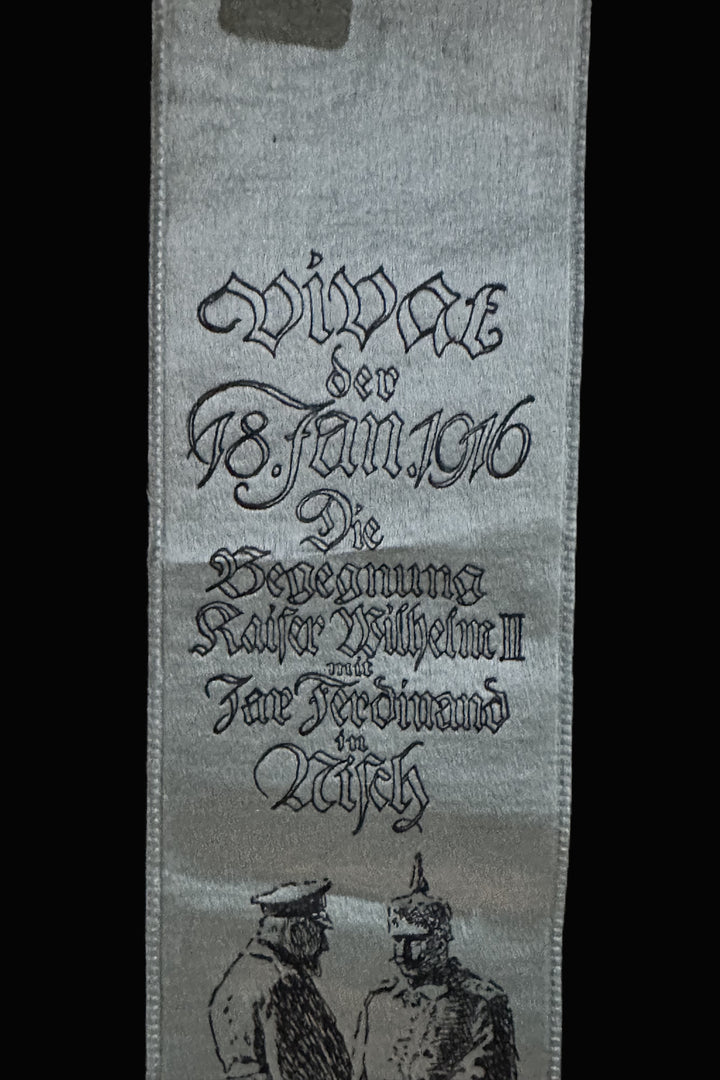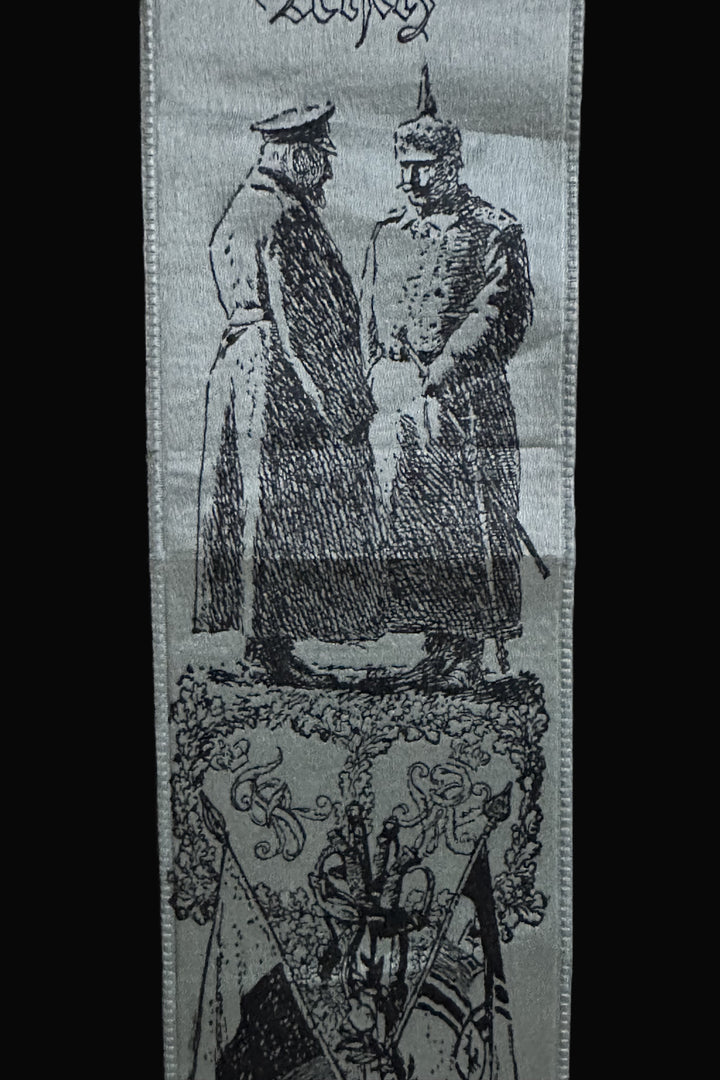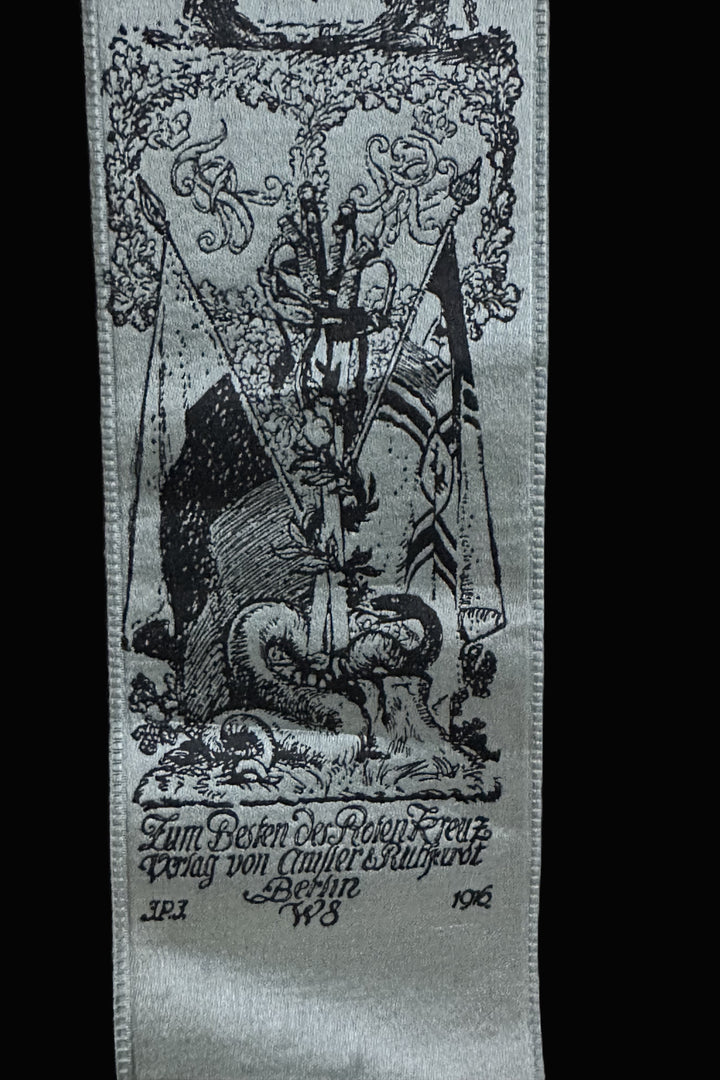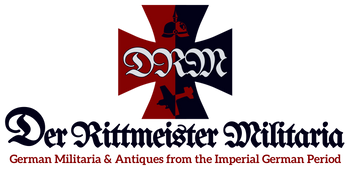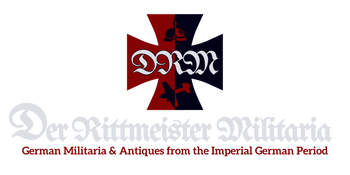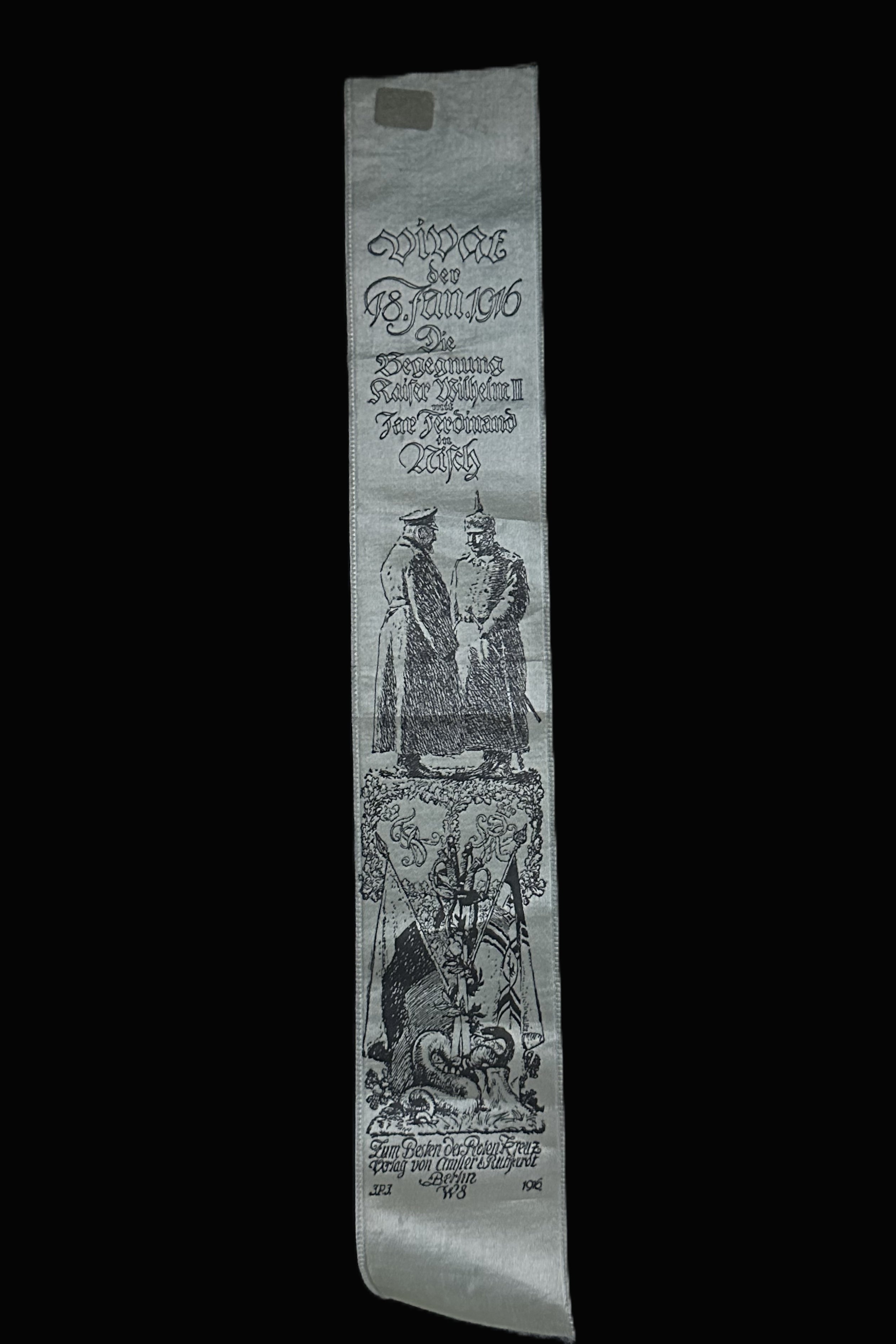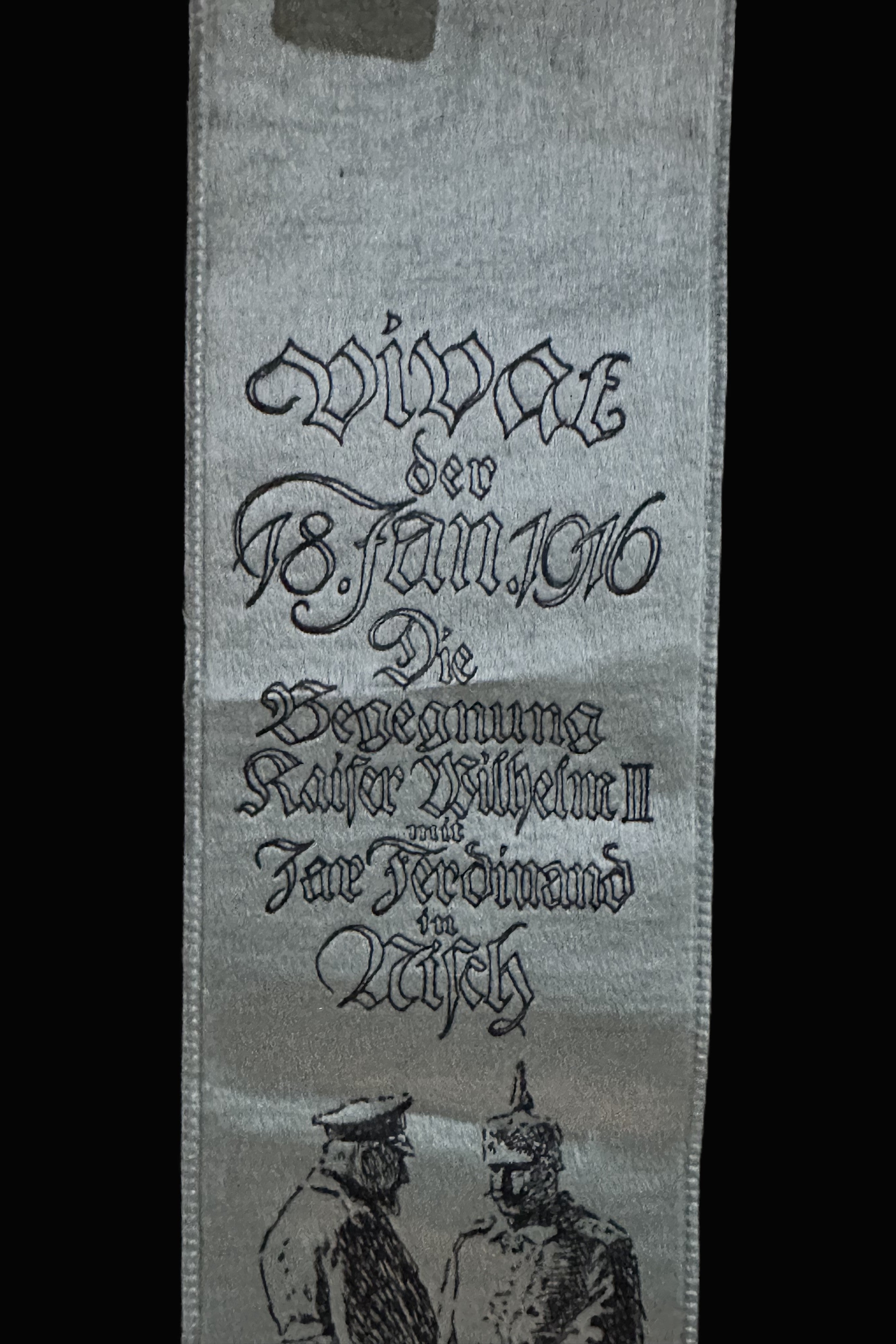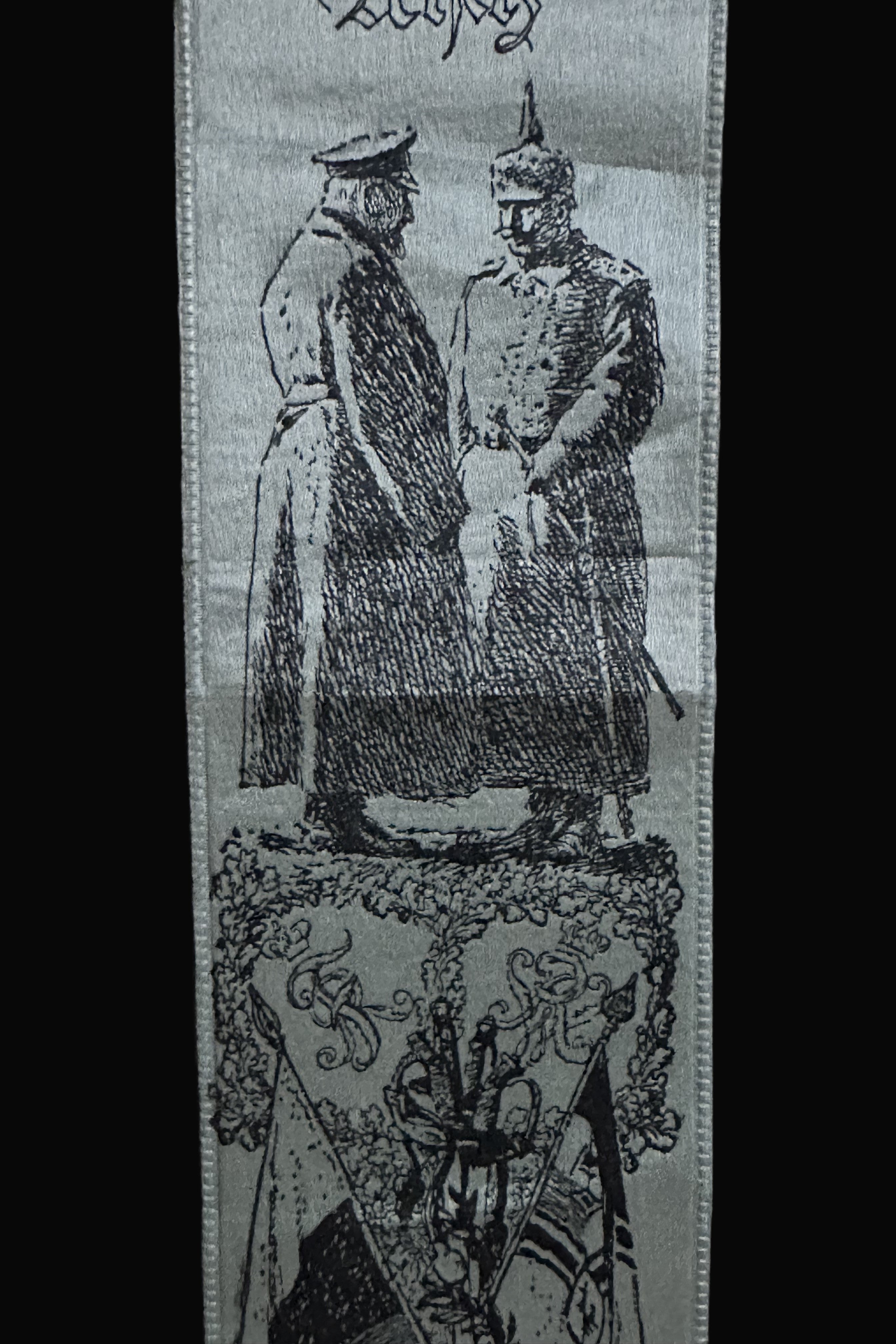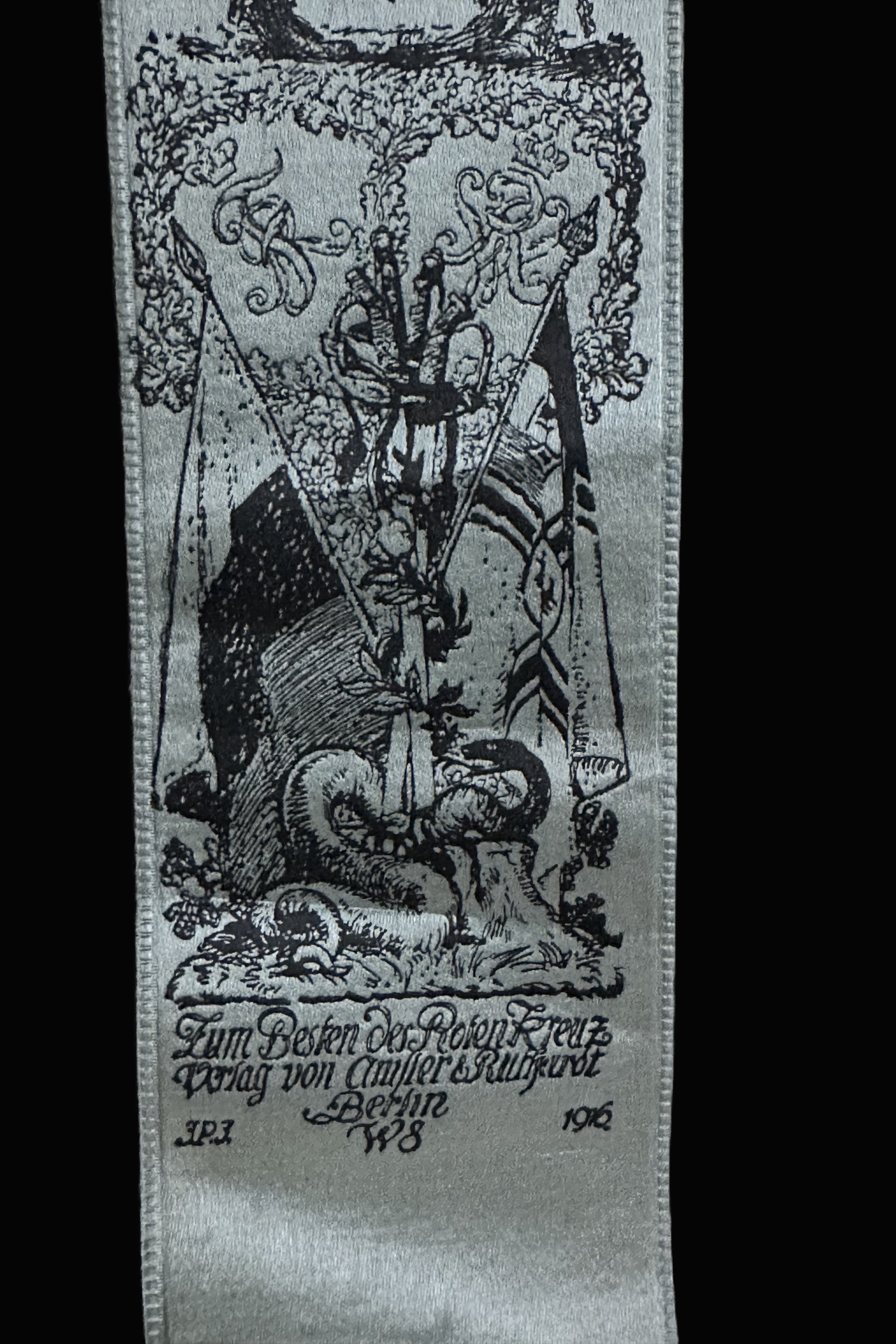1916 German VIVAT Silk Fund-Raising Ribbon
- Regular price
- $87.00
- Sale price
- $87.00
- Regular price
SKU: 36-02
1916 German “VIVAT” Silk Fund-Raising Ribbon — Meeting of Kaiser Wilhelm II & Tsar Ferdinand at Niš (Nisch) — Amsler & Ruthardt, Berlin (for the Red Cross)
Object type: Patriotic fund-raising ribbon (Vivatband)
Date: 18 January 1916
Publisher: Verlag von Amsler & Ruthardt, Berlin W8 (for the benefit of the German Red Cross)
Materials: Jacquard-woven silk with black design and lettering; woven selvedge edges
Dimensions: approx. 40 cm long × 6.4 cm wide (ca. 15¾" × 2½")
Provenance: From a Central Powers / WWI ephemera collection
Identification & Description
A classic German Vivatband commemorating a headline event of the Central Powers in WWI: the meeting of German Emperor Wilhelm II and Bulgarian Tsar Ferdinand I in Niš (German: Nisch) on 18 January 1916. The ribbon is woven on a silvery-grey silk ground with black imagery and Gothic text.
-
Upper field with large “VIVAT” heading and the event inscription.
-
Central panel shows Kaiser Wilhelm II (in greatcoat and pickelhaube) and Tsar Ferdinand I of Bulgaria (in cap and fur-collar coat) standing together.
-
Lower cartouche framed with foliate ornament, crossed flags and standards, trophies of arms, and a sword piercing a serpent (allegory of victory over the enemy).
-
Bottom line with the charitable legend and imprint: “Zum Besten des Roten Kreuz. Verlag von Amsler & Ruthardt, Berlin W8, 1916” with a small plate/series code at left.
Full transcription (German) and English translation
German (as woven):
VIVAT der 18. Jan. 1916 / Die Begegnung Kaiser Wilhelm II und Zar Ferdinand in Nisch
Zum Besten des Roten Kreuz / Verlag von Amsler & Ruthardt / Berlin W8 / 1916
English:
VIVAT (Hurrah) for 18 January 1916 / The meeting of Emperor William II and Tsar Ferdinand in Niš.
For the benefit of the Red Cross / Published by Amsler & Ruthardt / Berlin W8 / 1916.
Note: “Vivat” ribbons were sold for charity (most commonly the Red Cross) at kiosks, patriotic events, and by subscription; the imagery and text are woven, not printed.
Historical Context (why this ribbon was issued)
Bulgaria had joined the Central Powers in October 1915. German, Austro-Hungarian, and Bulgarian forces overran Serbia that autumn, and Niš—a key Serbian city—fell in November 1915, becoming a Central Powers hub. The meeting of Wilhelm II and Ferdinand I on 18 January 1916 publicly underscored Bulgarian-German cooperation as the coalition turned toward the Salonika/Macedonian theatre. Contemporary publishers quickly celebrated such milestones with Vivat ribbons to raise money and morale—this being one of the more striking “leaders-meet” designs of the 1916 series.
About the figures:
-
Wilhelm II (1859–1941) was the last German Emperor and King of Prussia (r. 1888–1918).
-
Ferdinand I of Bulgaria (1861–1948), from the House of Saxe-Coburg and Gotha, was Prince (from 1887) and later Tsar of the Bulgarians (r. 1908–1918). Their alliance was crucial to Central Powers strategy in the Balkans.
About Amsler & Ruthardt: A respected Berlin art-publisher and dealer that, during WWI, produced a long series of “Vivatbänder” designed by leading graphic artists. Proceeds supported the Rotes Kreuz (Red Cross). Collectors usually classify these by event/date and imprint; this example belongs to the 1916 group.
Condition Report
-
Silk ground sound and supple with two light horizontal folds/creases from historic storage.
-
Top shows a small, pale rectangular remnant (old mounting tab/label) on the reverse that “ghosts” to the front near the heading.
-
Edges remain straight with intact woven selvedge; no tears or losses observed.
-
Moderate, honest age toning and the usual minor silk moiré rubbing under raking light; black weave is strong and readable.
Overall, better-than-average survival for a 1916 Vivat ribbon—clean, displayable, and complete.
Collectability & Notes for Display
-
Popular “leaders meeting” motif with clear date and place makes this a desirable subject for WWI and Balkan-front collections.
-
Presents beautifully framed in a UV-filtered shadow mount with a neutral archival mat; avoid adhesives—use corner sleeves or a pressure-fit mount to protect the silk.
-
Complements medals and documents for Bulgarian, Prussian, or Central Powers groupings from late 1915–1916.
